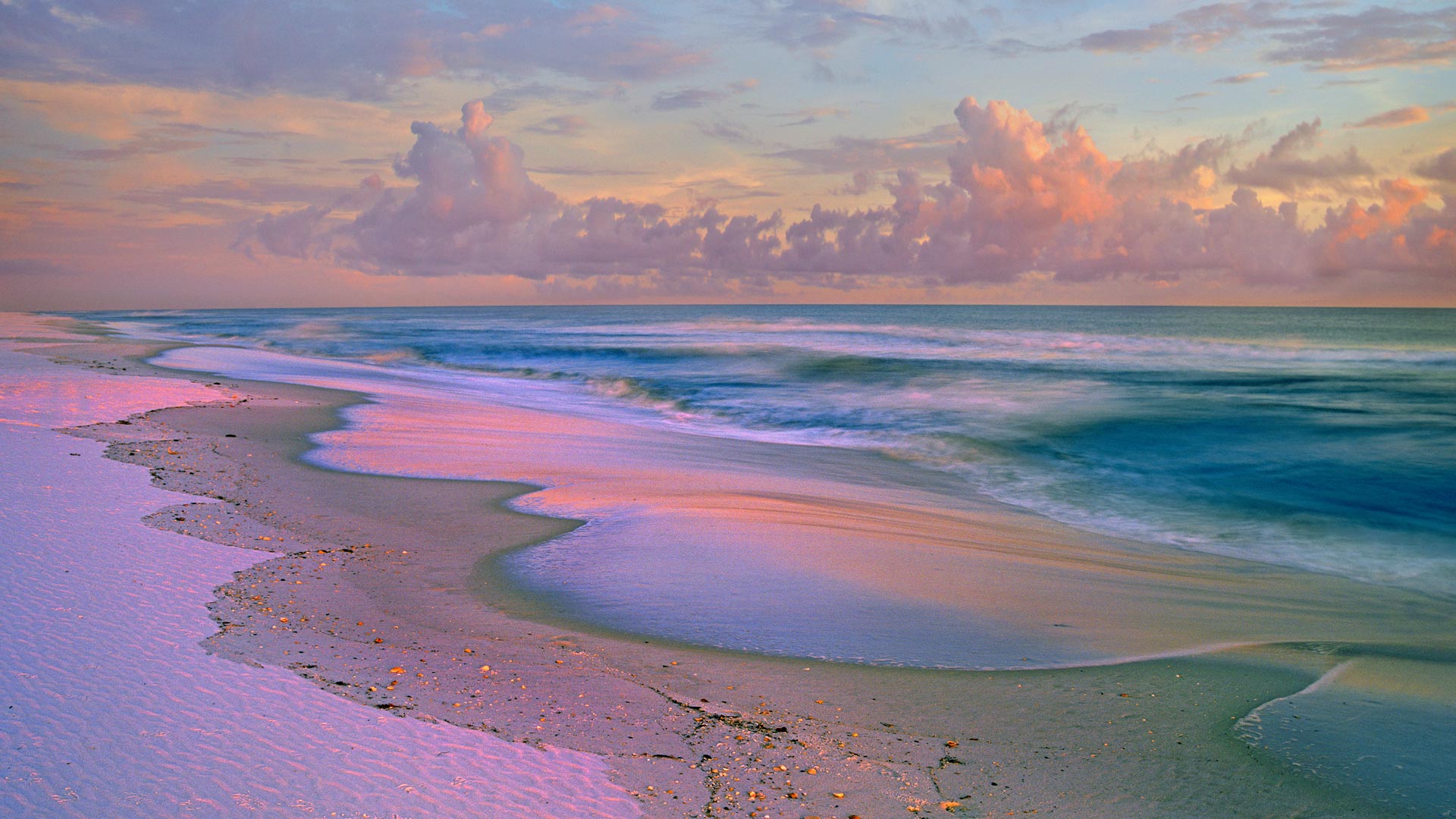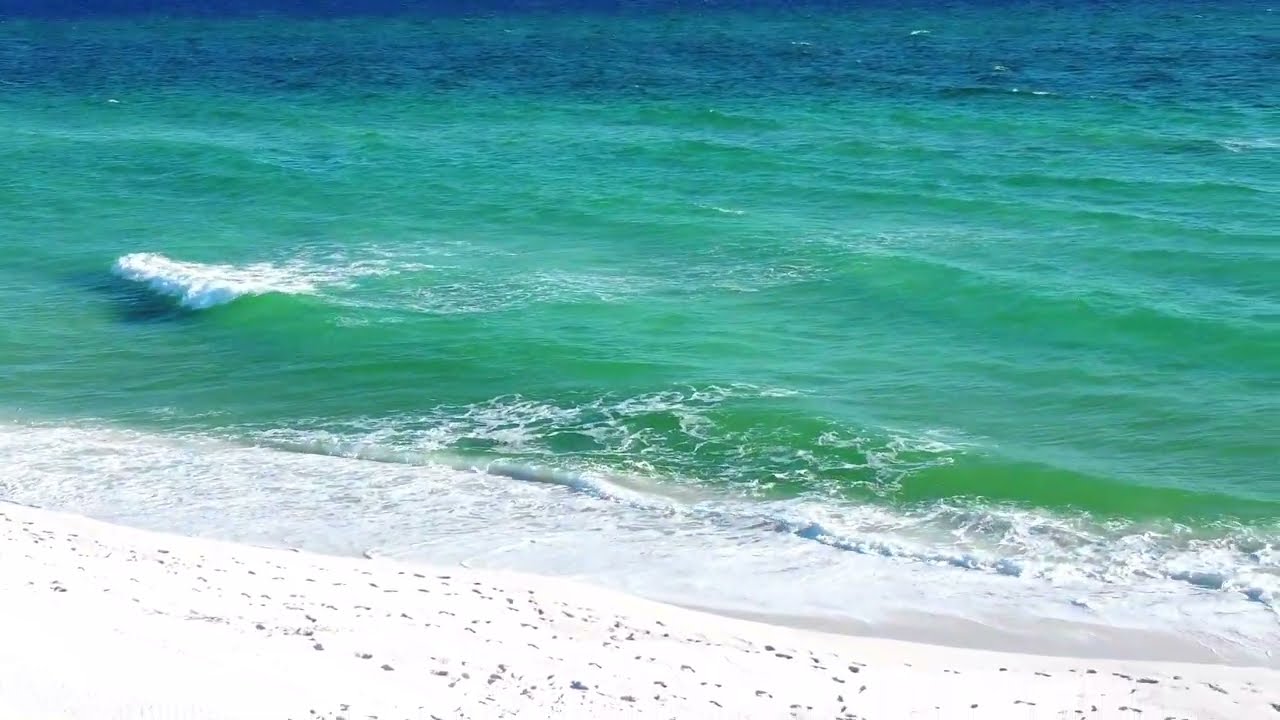
The Shifting Sands of Paradise: A Chronicle of the Gulf Islands
From the sun-drenched shores of Texas to the emerald embrace of Florida’s panhandle, a delicate ribbon of land guards the southern flank of the United States. These are the Gulf Islands – a dynamic, breathtaking, and profoundly vulnerable archipelago that defines the character of America’s Gulf Coast. More than just a collection of white-sand beaches and swaying sea oats, these islands are living ecosystems, historical sentinels, and economic engines, locked in a perpetual dance with the forces of nature. To understand them is to appreciate a unique brand of beauty, resilience, and the urgent call for stewardship.
The allure is immediate and undeniable. Step onto a Gulf Island beach, and the world seems to recede. The sand, often described as "sugar-white" or "powder-soft," is composed of fine quartz crystals washed down from the Appalachian Mountains over millennia. It squeaks underfoot, cool even on the hottest days, reflecting the intense sunlight that bathes the region. The water, a spectrum from translucent aquamarine to deep emerald, laps gently at the shore, inviting waders and swimmers into its refreshing embrace. Beyond the immediate surf, the Gulf of Mexico stretches, an immense body of water teeming with life, its surface often dotted with the playful arcs of dolphins or the distant silhouettes of fishing boats.
This superficial paradise, however, belies a complex and vital ecological role. The Gulf Islands are classic barrier islands, formed by the relentless action of waves, currents, and winds, constantly shifting and evolving. They are the mainland’s first line of defense against the fury of tropical storms and hurricanes, absorbing the brunt of the waves and storm surge, thereby protecting the estuaries, marshes, and human settlements inland. Without them, the coastal landscape would be irrevocably altered, and the human cost of living on the Gulf would be immeasurably higher.

Ecologically, these islands are biodiversity hotspots. Their distinct habitats range from the primary dunes, anchored by hardy sea oats and bitter panicum, to maritime forests further inland, where live oaks and pines stand sentinel, often gnarled and sculpted by persistent winds. The brackish waters of the bays and estuaries behind the islands are nurseries for countless marine species, including shrimp, crabs, oysters, and juvenile fish – the very foundation of the Gulf’s vibrant seafood industry.
For ornithologists and casual birdwatchers alike, the Gulf Islands are a spectacle. Positioned along the critical Mississippi Flyway, they serve as crucial stopover points for millions of migratory birds traveling between North and South America. From the vibrant roseate spoonbills wading in the shallows to the majestic osprey soaring overhead, and the secretive piping plovers nesting on the upper beach, the islands are a symphony of avian life. Sea turtles, including the endangered Kemp’s ridley, loggerhead, and green turtles, haul themselves onto these very beaches each summer to lay their precious clutches of eggs, continuing an ancient ritual that underscores the islands’ role in global conservation.
Beyond their natural splendor, the Gulf Islands are steeped in history. For centuries, indigenous peoples thrived along these shores, living off the abundant resources of the Gulf. Later, European explorers and colonial powers recognized their strategic importance. Forts, like the imposing Fort Pickens on Santa Rosa Island in Florida or Fort Morgan at the mouth of Mobile Bay, stand as stoic reminders of past conflicts, their weathered brickwork whispering tales of battles fought and empires contested. Lighthouses, such as the iconic Port Isabel Lighthouse in Texas or the Pensacola Lighthouse, have guided mariners for generations, their beams piercing the darkness, symbols of hope and safety against the treacherous Gulf waters.
"These islands are living history books," remarks Dr. Eleanor Vance, a coastal historian at the University of West Florida. "From the remnants of Spanish shipwrecks to the Civil War-era fortifications, they tell the story of human ambition, survival, and adaptation in the face of a powerful natural world. Every dune, every stretch of marsh, has a narrative."
Today, the human connection to the Gulf Islands is primarily one of recreation and solace. Millions flock to their shores annually, drawn by the promise of sun, sand, and sea. Shelling is a revered pastime, with collectors sifting through treasures left by the tide – whelks, conchs, olive shells, and sand dollars. Anglers cast lines from piers, boats, and the surf, hoping to reel in redfish, speckled trout, or pompano. Boating, kayaking, paddleboarding, and simply unwinding with a book under the shade of an umbrella are all quintessential Gulf Island experiences. The rhythm of life here is often dictated by the tides and the sun, fostering a laid-back, welcoming culture that embodies the spirit of the American South.
Yet, this paradise lives under a constant, looming threat. The very forces that shaped the islands also hold the power to dismantle them. Hurricanes are an inescapable reality of life on the Gulf Coast. Powerful storms, amplified by warming ocean waters, can reshape coastlines in a single night, eroding miles of beach, flattening dunes, and inundating communities. The memory of Hurricane Katrina in 2005, or more recently, Hurricane Michael in 2018, serves as stark reminders of the immense destructive capacity of these natural phenomena.
Beyond the episodic violence of hurricanes, a more insidious threat is at play: chronic erosion. Natural processes, exacerbated by rising sea levels driven by climate change, are steadily eating away at the islands. Development, often too close to the dynamic shoreline, further destabilizes these fragile systems, leading to costly and often futile efforts to "armour" the coast with seawalls and rock jetties, which can paradoxically worsen erosion elsewhere.
And then there is the specter of oil. The Gulf of Mexico is a hub of offshore drilling, a critical component of the nation’s energy infrastructure. But this proximity carries inherent risks. The Deepwater Horizon oil spill in 2010, one of the worst environmental disasters in history, coated miles of Gulf Island beaches with oil, decimated marine life, and brought the region’s tourism and fishing industries to a grinding halt. While the visible oil has largely been cleaned, the long-term ecological impacts continue to be studied, a somber reminder of humanity’s capacity to inadvertently harm the very environment it cherishes.

"The Gulf Islands are on the front lines of climate change," states Dr. Kevin Schmidt, a marine biologist with the National Oceanic and Atmospheric Administration. "They face a triple threat: more intense storms, accelerating sea-level rise, and the ongoing risk of industrial accidents. Their resilience is remarkable, but there’s a limit to how much they can absorb without our help."
In response to these threats, a robust network of conservation efforts is in place. Many of the most pristine sections of the Gulf Islands are protected under federal and state designations. The Gulf Islands National Seashore, spanning parts of Florida and Mississippi, protects thousands of acres of barrier islands, historic forts, and marine habitats. Padre Island National Seashore in Texas, the longest undeveloped barrier island in the world, offers a vital sanctuary for wildlife, particularly nesting sea turtles. State parks and local conservation groups also play crucial roles, engaging in dune restoration, sea turtle monitoring, and public education.
These efforts are not just about preserving nature; they are about safeguarding a way of life. The economies of countless coastal communities are intrinsically linked to the health and beauty of these islands. Tourism, fishing, and recreation industries depend on clean beaches, thriving ecosystems, and accessible natural spaces. There’s a growing understanding that protecting the islands isn’t just an environmental luxury, but an economic imperative.
The future of the Gulf Islands is a complex equation, balancing the demands of human development with the imperatives of ecological preservation. It requires innovative engineering solutions, smart land-use planning, and a deep, sustained commitment to conservation. It means investing in restoration projects, like planting sea oats to stabilize dunes, restoring oyster reefs to filter water and create habitat, and protecting vital seagrass beds. It also means fostering a culture of awareness and responsibility among residents and visitors alike.
The Gulf Islands are more than just a geographic feature; they are a metaphor for the delicate balance between humanity and the natural world. They are a testament to nature’s power and beauty, and a poignant reminder of our responsibility to protect it. As the sun sets over their shimmering waters, casting long shadows across the dunes, one is left with a profound sense of awe and a quiet understanding: these shifting sands of paradise are a treasure, one that demands our unwavering vigilance and love. Their fate, like so much of our planet’s wild beauty, ultimately rests in our hands.


